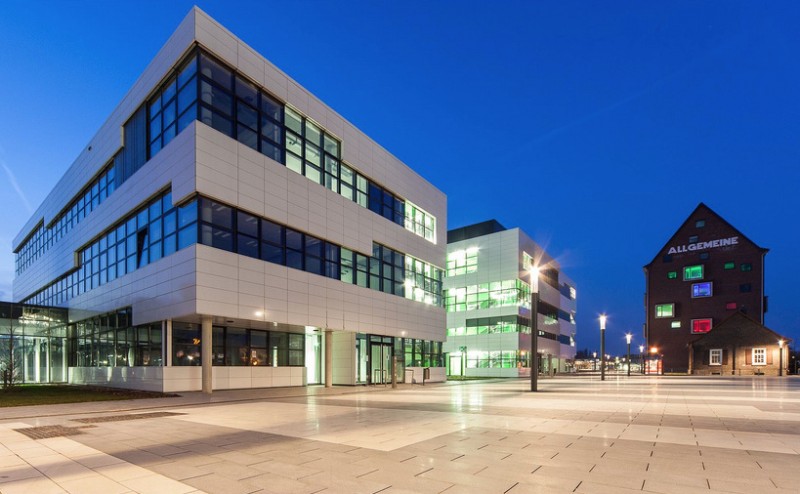This study Read more [...]
Science Communication and Bionics
Course Category: Bachelor, Bachelor of Arts, and Bachelor of Science
-
Focus of Study
A half of the curriculum of the study programme is devoted to the basics of various scientific disciplines, such as mathematics, physics, chemistry, bionics, biomedical sciences, etc. The other half is focused on the communication subjects: history of science and technology, political communication, media studies, journalism, public engagement, risk and crisis communication, communication management, innovative and interactive formats and many more.
Being equipped with the knowledge and practical skills in both science and communication, students develop cross-disciplinary thinking and learn how to reflect critically upon the controversial scientific issues and responsible research and innovation.
Besides the academic and theoretical background, there are very practical-oriented sessions taught by outstanding experts coming from all over the world, which provides students with a deep insight into their possible future career. Since the international aspect of this programme is very strong, students are expected to work on their English skills (both writing and speaking) throughout the course.
After the third semester, students have an opportunity to choose whether they want to complete a Bachelor of Science or a Bachelor of Arts, which will lead to the minor differences in the elective courses and “switch” subjects.
Course Description
Science Communication is a form of mediation between science on the one side and its various stakeholders in politics, the economy, and the general public on the other. It is essential, therefore, to foster an independent journalism which not only ‘translates’ science for lay audiences but also questions critically the foundations of science and the policies involved in a way that the public can understand. Also companies and universities are facing the challenge to reconfigure their public relations departments to take public engagement as serious as the stakeholders expect it to be, instead of merely legitimising the results of their research and developing efforts.
Currently the fields of journalism and PR are undergoing fundamental, historic changes. You, as a graduate of our course, therefore have the opportunity to play a part in no less than redefining and redesigning your own profession. To help you deal with the structural changes in the media landscape, many innovative approaches and formats will be covered during your studies, such as smart phone apps, social media, and game-based communication, in addition to the usual skills.
As science communication increasingly operates outside traditional borders, we are preparing you specifically for the global job market, as in transnational research-intensive enterprises or publishing houses, and particularly such institutions which simply do not exist on a national level, e.g. the various institutions of the European Commission. For this reason “Science Communication & Bionics” is taught in English inside Germany and compares the internationally very different systems of media, culture, science and policy-making. This transnational approach, which is woven into every aspect of the course, is one of its unique strengths.
In addition to learning the tools of trade of science and technology journalism, public relations and marketing, you are also going to study the political side of science, including risk communication, public affairs and lobbying.
All students are offered special language training, be it in English, German or other languages in addition to their normal courses on writing and ethics. Our science communicators also logically learn a collection of scientific themes, usually using biomimetic (bionic) examples. Biomimetics is the idea of transferring concepts from natural systems to artificial ones and spans the sciences and engineering. Students learn enough of the basics to be able to understand what scientists and engineers do. Some students may want to specialise in these areas and carry on in science and engineering with the advantage of also being able to communicate professionally and responsibly. Choice is also available between scientific or communication elective courses and in from which direction project work is approached.
Course Structure
The course takes seven half-year semesters, the first two of which being the basics of science and communication. For the sixth semester students go to a company or another university to gain experience and extend their horizons. After this the students deepen their understanding of the subject, finishing with a bachelor thesis in their seventh semester. This is as close to real practice as possible and often takes place inside a company.
Career Paths
Science Communication & Bionics students will be able to enter many careers in the following areas:
- Public relations departments in universities, extramural research institutes, government organisations or companies
- Communications offices in NGOs, unions and lobby groups
- Research Communications in companies and for large research projects
- Editors and freelance journalists in specialised magazines, newspapers, for television, radio and, in increasing importance online
- Consultants and communicators in PR and marketing agencies, particularly when the customer has a scientific or technical focus
- Press offices of charities and foundations sponsoring scientific works, cluster organisations, research councils and similar institutions
- Editors for scientific publishers

